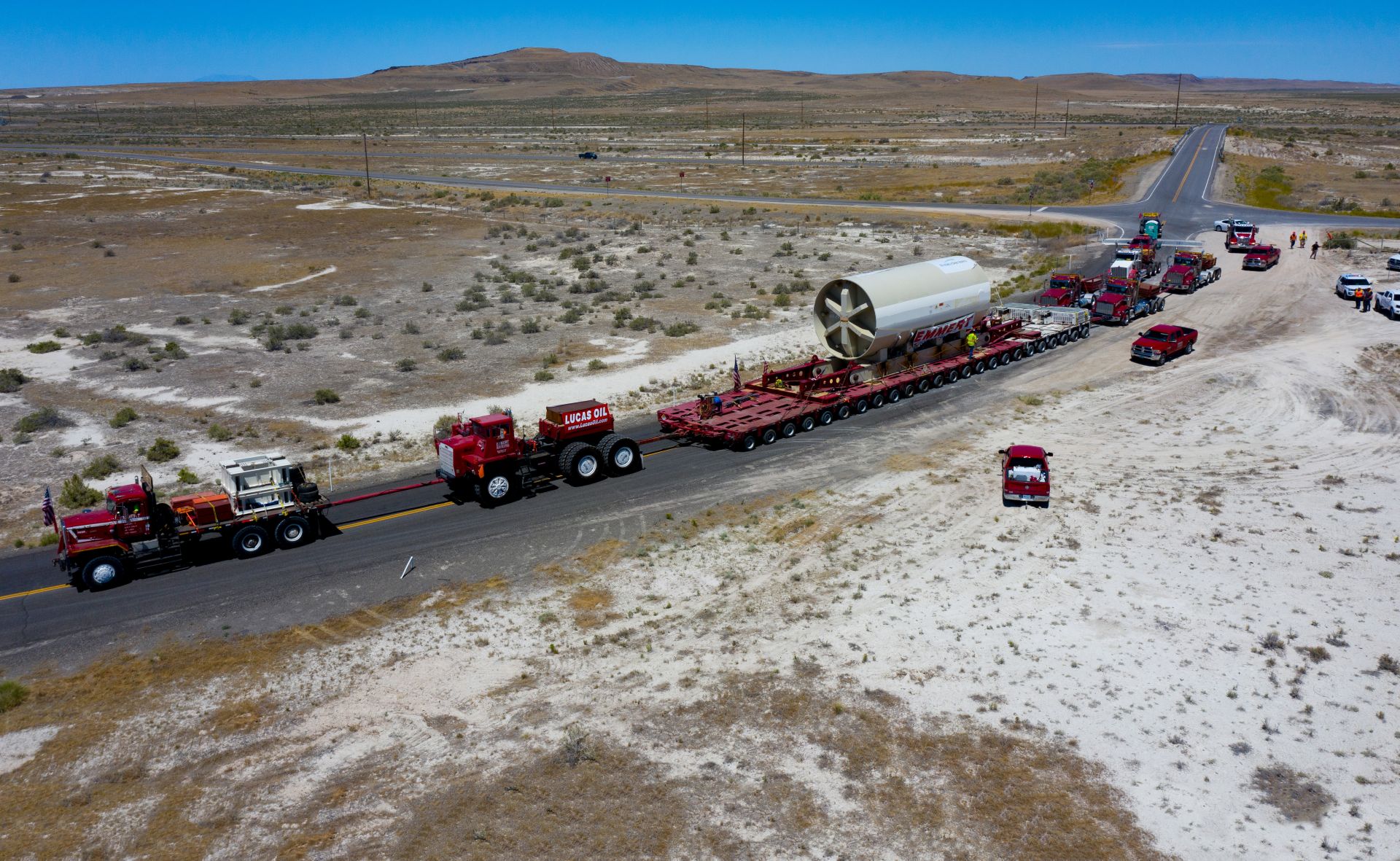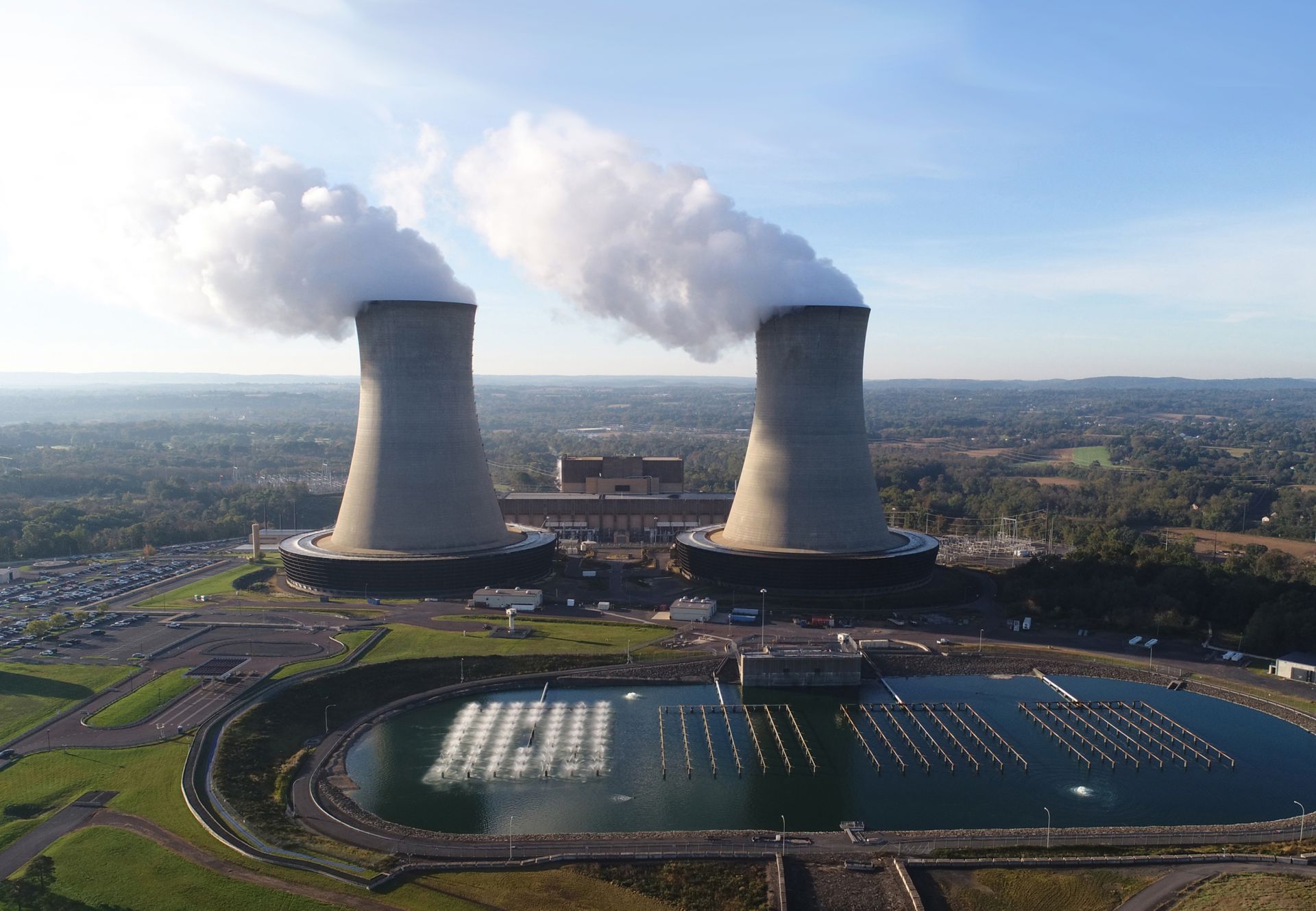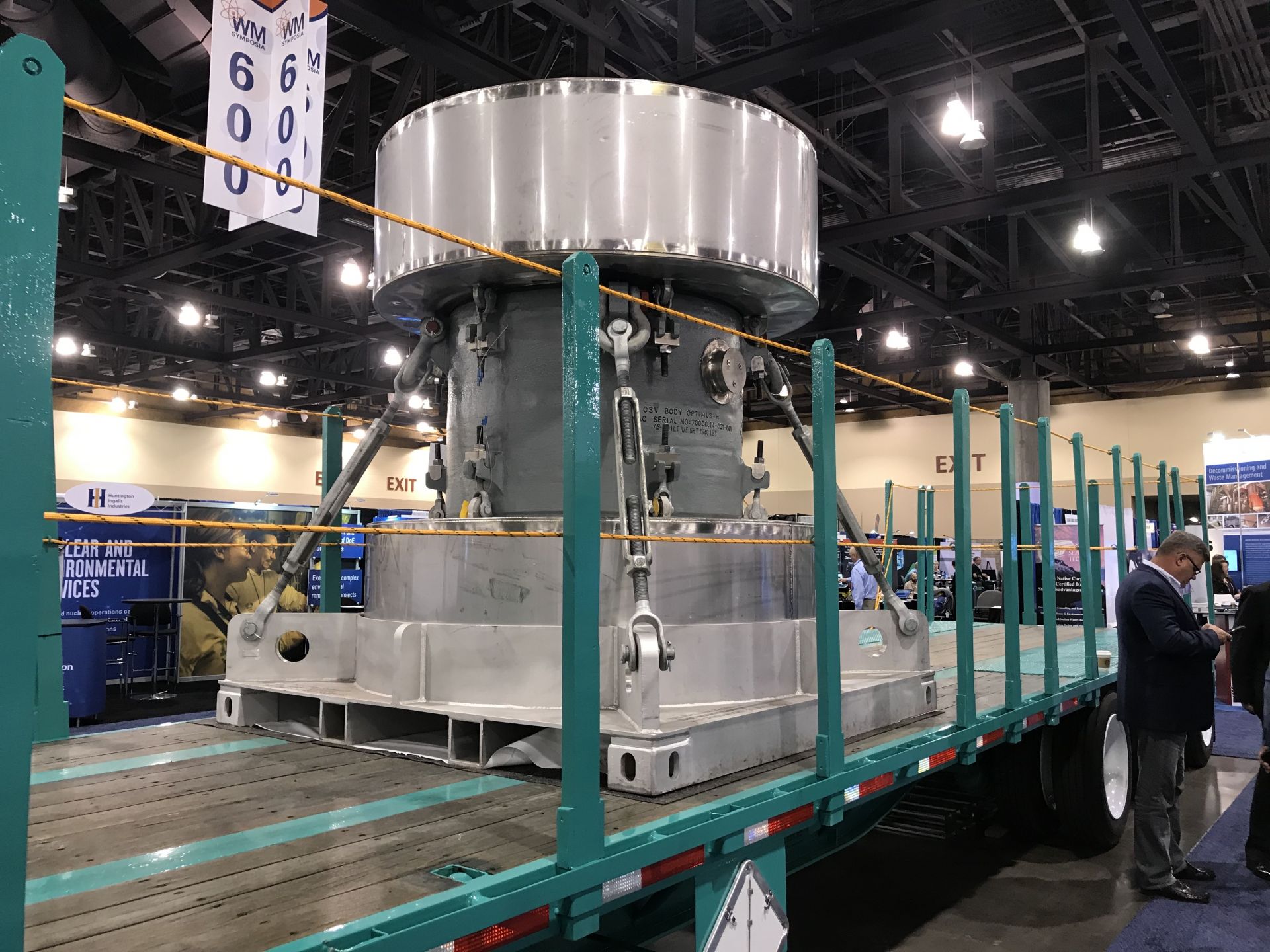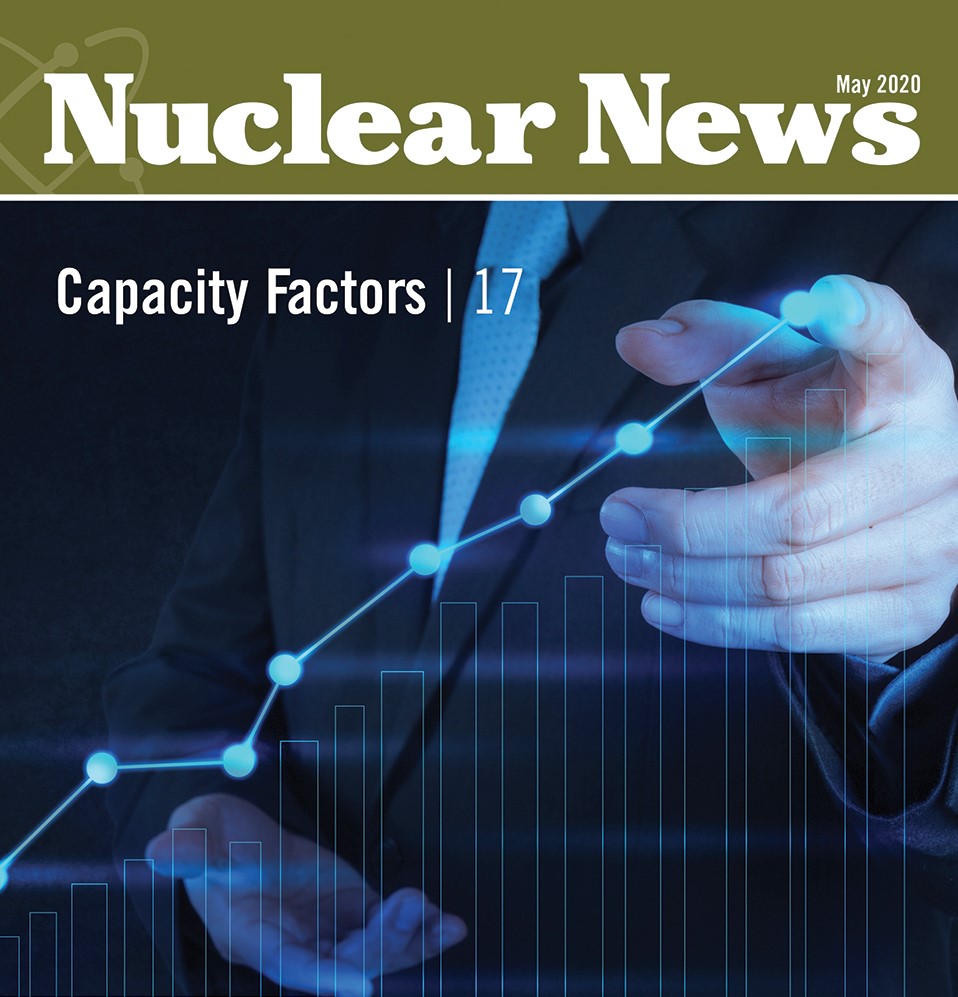A systematic analysis of drivers and barriers of cross-sectorial learning between nuclear and oil and gas decommissioning projects.
October 2, 2020, 3:39PMRadwaste SolutionsDiletta Colette Invernizzi, Nick Higginson, Richard Howells, Willem Van Es, and Ian Beadle The Deepsea Delta oil-drilling platform in the North Sea. The dismantling of such large oil and gas structures may offer lessons that can be applied to nuclear decommissioning.
Within the energy sector, the management of projects and megaprojects has historically focused on the planning and delivery of the construction of infrastructure [1–3]. Therefore, policies are more oriented to support the construction of infrastructure rather than its decommissioning. Globally, however, a number of facilities have reached or will soon reach their end of life and need to be decommissioned.
These facilities span the energy sector, including nuclear power plants, oil and gas rigs, mines, dams, etc., whose decommissioning present unprecedented technical and socioeconomic challenges [4–7]. Moreover, the cost of decommissioning and waste management of this array of infrastructure is estimated to reach hundreds of billions of dollars and, for most of these projects, keeps increasing, with limited cross-sectorial knowledge-transfer to mitigate the spiraling increase of these figures.
Cross-sectorial knowledge-transfer is one way to tackle this matter and improve the planning and delivery of decommissioning projects. The aim of our research has been to build a roadmap that is designed to promote the sharing of good practices between projects both within the same industry and across different industrial sectors, focusing specifically on major decommissioning and waste-management challenges.
To reach this aim, our research leverages on the experience of senior industry practitioners and their involvement in the decommissioning and waste management of infrastructure in different sectors. More specifically, this research addresses the following questions:
To what extent can lessons learned be transferred across industrial sectors?
What are the challenges that hinder successful cross-sectorial knowledge-transfer?
In storage at San Onofre for 18 years, the 670-ton SONGS-1 reactor pressure vessel undertook a 51-day trip across three states to its final disposal site.

Six large trucks were used to push and pull the SONGS-1 reactor pressure vessel 400 miles through Nevada and into Utah with a maximum speed of 10 miles per hour over a 10-day period. Photo: EnergySolutions
July 14 marked a milestone in the decommissioning of the San Onofre Nuclear Generating Station (SONGS), as the Unit 1 reactor pressure vessel (RPV) completed a seven-week journey from Southern California to EnergySolutions’ Clive disposal facility in Utah. The approximately 670-ton RPV package, containing the pressure vessel from the previously decommissioned SONGS-1, pieces of radioactive metal, and grout for radiation shielding, left San Onofre on May 24, traveling by rail to a location outside Las Vegas, where it was transferred to a platform trailer to be transported the remaining 400 miles to Clive, about 75 miles west of Salt Lake City.
“This project was a very complex undertaking that required approvals and/or coordination with over two dozen federal, state, and local agencies and government entities,” said Todd Eiler, director of the EnergySolutions Projects Group, which handled the transport. “The coordinated effort with the rail lines and departments of transportation in California, Nevada, and Utah resulted in another safe and successful large component shipment managed by the EnergySolutions Projects Group.”
The Operations Center at NRC headquarters in Rockville, Md., is put to the test during exercises designed to prove and improve U.S. nuclear emergency preparedness and incident response capabilities.
 One essential lesson from the events at Three Mile Island-2 in March 1979 can be summed up in three words: Preparedness takes practice. The emergency response capacity of the Nuclear Regulatory Commission and nuclear plant operators is more than just a set of procedures. Active training and evaluation are required to coordinate effectively with local and state authorities and protect the public in the event of an off-site radiological release.
One essential lesson from the events at Three Mile Island-2 in March 1979 can be summed up in three words: Preparedness takes practice. The emergency response capacity of the Nuclear Regulatory Commission and nuclear plant operators is more than just a set of procedures. Active training and evaluation are required to coordinate effectively with local and state authorities and protect the public in the event of an off-site radiological release.
The NRC’s emergency preparedness and incident response teams work in the Office of Nuclear Security and Incident Response (NSIR) to support licensees’ mandated emergency preparedness programs. The Operations Center at NRC headquarters is staffed around-the-clock with NSIR officers who can respond to technical questions and evaluate licensee event reports, yet most of its infrastructure typically stands vacant, awaiting activation for an incident or a planned exercise. With full activation of the NRC’s incident response program, the Operations Center comes to life, and teams of staff populate workstations. That process is regularly tested during exercises that involve NRC licensees, state and local responders, and similar incident response centers at each of the NRC’s four regional offices.
No two exercises are the same. Not only is every exercise dependent on variable human performance and every plant located in a unique community, but emergency preparedness benchmarks continually evolve with advancements in technologies and procedures.
Before the spring outage at Limerick-1 began, Exelon Generation implemented rigorous procedures to keep its employees and contractors—and the public—safe.

Limerick Nuclear Power Plant
Refueling a nuclear reactor under normal circumstances can be a challenging endeavor, with hundreds of maintenance activities and inspections to perform in a short window of time, and more than a thousand supplemental workers on-site to complete the work safely and effectively. But these are anything but normal circumstances.
In the midst of the COVID-19 pandemic, U.S.-based experts from Dominion Engineering led European workers remotely in the execution of ultrasonic fuel cleaning.
Around the world in the mid-March time frame, conditions were changing rapidly due to the COVID-19 pandemic, as was everyone’s understanding of it. For nuclear power plants, the pandemic meant dealing with new government regulations and restrictions that were put in place. “U.S.-based support of international clients was especially challenging,” said Mike Little, president and principal officer of Reston, Va.–based Dominion Engineering Inc. (DEI). “With border closures going into effect, we were not only focusing on the health and safety of our workers abroad, but also making sure they would be able to return home. Providing remote subject matter expertise from the U.S. through our international service partners was critical to successful job execution during this time.”
The 66th president of the American Nuclear Society takes the helm at a time of great change, both internally and externally.
 Mary Lou Dunzik-Gougar said she feels very fortunate to be taking on the role of president of the American Nuclear Society at this moment in history. “By that, I don’t mean at the time of the COVID-19 pandemic,” she quickly clarified. “I mean at a time when we are making exciting and transformational changes to the Society.”
Mary Lou Dunzik-Gougar said she feels very fortunate to be taking on the role of president of the American Nuclear Society at this moment in history. “By that, I don’t mean at the time of the COVID-19 pandemic,” she quickly clarified. “I mean at a time when we are making exciting and transformational changes to the Society.”
These changes are described in the aptly named Change Plan 2020, which was developed by a group that included ANS past presidents Andy Klein, Gene Grecheck, and Bob Coward, with input from members, including Dunzik-Gougar, and was approved by the ANS Board of Directors at the November 2019 ANS Winter Meeting in Washington, D.C. Already, Change Plan 2020 has reshaped the way the Society interacts with its members, including a new, greatly improved website and an updated, more vibrant and informative Nuclear News magazine. The plan has also reorganized the Society to create, in the words of ANS’s new executive director and chief executive officer, Craig Piercy, a “more streamlined, less siloed organization that is better equipped to meet our members’ needs going forward.”
The 40-year effort to make research reactors safer and more secure has led to the conversion of 71 reactors worldwide from HEU fuel to LEU.

The Ghana Research Reactor-1, located in Accra, Ghana, was converted from HEU fuel to LEU in 2017. Photo: Argonne National Laboratory
In late 2018, Nigeria’s sole operating nuclear research reactor, NIRR-1, switched to a safer uranium fuel. Coming just 18 months on the heels of a celebrated conversion in Ghana, the NIRR-1 reboot passed without much fanfare. However, the switch marked an important global milestone: NIRR-1 was the last of Africa’s 11 operating research reactors to run on high-enriched uranium fuel.
The 40-year effort to make research reactors safer and more secure by replacing HEU fuel with low-enriched uranium is marked by a succession of quiet but immeasurably significant milestones like these. Before Africa, a team of engineers from many organizations, including the U.S. Department of Energy’s Argonne National Laboratory, concluded its conversion work in South America and Australia. Worldwide, 71 reactors in nearly 40 countries have undergone conversions to LEU, defined as less than 20 percent uranium-235. Another 31 research reactors have been permanently shut down.
CORTEX aims to enable the early detection, localization, and characterization of anomalies in nuclear reactors while they are operating.
We often define noise as an unwanted disturbance, especially acoustic in nature. Neutron noise, by contrast, is a direct measure of the dynamics of a nuclear core. It can be used for core monitoring without disturbing plant operation and by using the existing core instrumentation. The European CORTEX project aims to develop an innovative core monitoring technique using neutron noise, while capitalizing on the latest developments in neutronic modeling, signal processing, and artificial intelligence.
Digital engineering, which uses advanced technologies to capture data and optimize design in a digital environment, is being applied for the first time to a DOE nuclear project and has already realized substantial benefits.
With a new generation of nuclear reactors in the works, Idaho National Laboratory has embraced digital engineering (DE) as a means of achieving the same efficiencies that companies in the private sector have been able to realize in everything from concert halls to aircraft engines.
DE—using advanced technologies to capture data and craft design in a digitized environment—has been evolving since the 1990s. For Mortenson Construction, a worldwide construction firm, using virtual design and construction resulted in a cumulative 600 days saved over 416 projects and a 25 percent increase in productivity. By building digital twins for assets, systems, and processes, DE has avoided more than $1.05 billion in customer, production, and mechanical losses.
Leaders at INL recognized in 2018 that DE could be useful in the design and construction of new commercial and test reactors. Managing construction costs, timing, and performance will be essential to maintain U.S. competitiveness.
Risk-informed and performance-based approaches to nuclear safety have saved money and improved safety for current reactors and have the potential to offer even greater benefits for advanced reactors.
June 26, 2020, 3:05PMNuclear NewsN. Prasad Kadambi, Edward Wallace, James O’Brien, and Robert Youngblood Since the 1980s, the nuclear power industry in the United States has worked to enhance the regulatory framework for nuclear facilities by making it more risk-informed and performance-based (RIPB). This has had some success in improving safety and reducing regulatory burden by focusing resources on the most risk--significant areas and allowing greater flexibility in choosing ways to achieve desired safety outcomes. However, there are further opportunities for the use of RIPB approaches in addressing current regulations and applying implementation tools, and in developing new RIPB regulations and advanced tools to further sharpen the focus on risk and performance outcomes.
Material cost reduction may be realized through cost-effective procurement scenarios, such as application of commercial grade dedication, reverse engineering, and electronic component repairs.

The Utilities Service Alliance’s organizational banners.
The Utilities Service Alliance (USA) was founded in 1996. Current membership stretches from coast-to-coast and includes eight utilities and nine nuclear stations: Energy Northwest, Columbia; Luminant, Comanche Peak; Indiana Michigan Power Company, Cook; Nebraska Public Power District, Cooper; DTE Energy, Fermi; Xcel Energy, Monticello and Prairie Island; STP Nuclear Operating Company, South Texas Project; and Talen Energy, Susquehanna. These plants represent 14 reactors (six boiling water reactors and eight pressurized water reactors) and more than 15,000 MWe of generation.
The USA Material Cost Reduction (MCR) project kicked off in January 2017. The Nuclear Energy Institute’s Delivering the Nuclear Promise initiative was in full swing as the utilities’ chief nuclear officers created multiple focus areas for cost reductions at the plants.
U.K. government funding for nuclear research and innovation in advanced fuels and recycling is having a significant impact and reenergizing the U.K. research base.
June 12, 2020, 2:55PMNuclear NewsPaul Nevitt, Dave Goddard, and Robin Taylor 
Fig. 1. Geographical spread of U.K. organizations engaged in the U.K. AFCP, including a number of the world leading U.K. universities. Image: NNL
Called “the first significant public investment in a generation,” the U.K. Advanced Fuel Cycle Program (AFCP) is driving innovation to underpin future nuclear deployment in the United Kingdom. Led jointly by the U.K. Department for Business, Energy and Industrial Strategy and the National Nuclear Laboratory (NNL), the program involves more than 40 U.K. organizations, including a number of world-leading U.K. universities (Fig. 1), and is working with international organizations across more than 10 countries, leveraging U.K. investment into more than £100 million in international programs.
Once again, the U.S. fleet has achieved a new personal best, even as utilities and operators face formidable challenges.
In the early years of the Nuclear News capacity factors survey, any factor over 70 was deemed excellent; any factor under 50 was considered poor. By that standard, all but two operating U.S. power reactors chalked up excellent performance during 2017–2019. A record 809.4 TWh of electricity was generated in the United States from nuclear energy in 2019, according to the U.S. Energy Information Administration (EIA), besting the record of 807.1 TWh set in 2018.
Nuclear News staff developed the capacity factors survey in the early 1980s as a way to identify the most productive reactors in an expanding fleet. Fleet improvement was the industry’s self-identified goal, but no one could anticipate the startlingly rapid pace of improvement, spurred by the Institute of Nuclear Power Operations (INPO), which boosted fleetwide performance to highs that continue today.
Producing packages for radioactive materials takes time, attention to detail, and a thorough commitment to quality assurance.

The Optimus-H transport cask on display at the 2020 Waste Management Conference in Phoenix, Ariz.
Jeff England, director of transportation projects for NAC International, pointed to the large stainless steel canister, which looked like a giant-sized silver dumbbell, perched on the flatbed of a semitrailer truck parked in the middle of the expansive exhibit hall in the Phoenix Convention Center. NAC, a provider of nuclear storage, transportation, and consulting services, was using the 2020 Waste Management Conference, held March 8–12 in Phoenix, Ariz., to unveil its newest transport casks, the Optimus-H and Optimus-L.
“These are a different niche,” England said of the casks, which were designed to transport radioactive materials, including remote-handled transuranic waste, high-activity intermediate-level waste, low-enriched uranium, and fissile materials. “You have a lot of [small] drum-sized packages, and you also have a lot of big packages that will hold around 10 55-gallon drums. But there’s not anything in between. We hold a 110-gallon drum capacity.”





 One essential lesson from the events at Three Mile Island-2 in March 1979 can be summed up in three words: Preparedness takes practice. The emergency response capacity of the Nuclear Regulatory Commission and nuclear plant operators is more than just a set of procedures. Active training and evaluation are required to coordinate effectively with local and state authorities and protect the public in the event of an off-site radiological release.
One essential lesson from the events at Three Mile Island-2 in March 1979 can be summed up in three words: Preparedness takes practice. The emergency response capacity of the Nuclear Regulatory Commission and nuclear plant operators is more than just a set of procedures. Active training and evaluation are required to coordinate effectively with local and state authorities and protect the public in the event of an off-site radiological release. Radiation has benefited mankind in many ways, including its use as an energy source and an indispensable tool in medicine. Since the turn of the 20th century, society has sought ways to harness its potential, while at the same time recognizing that radiological exposures need to be carefully controlled. Out of these efforts, and the work of many dedicated professionals, the principles of justification, optimization, and limitation have emerged as guiding concepts.
Radiation has benefited mankind in many ways, including its use as an energy source and an indispensable tool in medicine. Since the turn of the 20th century, society has sought ways to harness its potential, while at the same time recognizing that radiological exposures need to be carefully controlled. Out of these efforts, and the work of many dedicated professionals, the principles of justification, optimization, and limitation have emerged as guiding concepts.

 Mary Lou Dunzik-Gougar said she feels very fortunate to be taking on the role of president of the American Nuclear Society at this moment in history. “By that, I don’t mean at the time of the COVID-19 pandemic,” she quickly clarified. “I mean at a time when we are making exciting and transformational changes to the Society.”
Mary Lou Dunzik-Gougar said she feels very fortunate to be taking on the role of president of the American Nuclear Society at this moment in history. “By that, I don’t mean at the time of the COVID-19 pandemic,” she quickly clarified. “I mean at a time when we are making exciting and transformational changes to the Society.”


 Nuclear power plant performance includes both operational and safety aspects and is an outcome of numerous elements, such as the reliability of equipment, reduction in challenges to plant operations, protection of workers, and proficiency of operations. These elements are inextricably linked to each other and to the safety of each facility. In short, a well-run plant is a safe plant for the workers and the public, and a well-run plant is an efficient plant. By-products of high performance include improved regulatory performance, worker safety, plant reliability, and, most important, public health and safety.
Nuclear power plant performance includes both operational and safety aspects and is an outcome of numerous elements, such as the reliability of equipment, reduction in challenges to plant operations, protection of workers, and proficiency of operations. These elements are inextricably linked to each other and to the safety of each facility. In short, a well-run plant is a safe plant for the workers and the public, and a well-run plant is an efficient plant. By-products of high performance include improved regulatory performance, worker safety, plant reliability, and, most important, public health and safety.